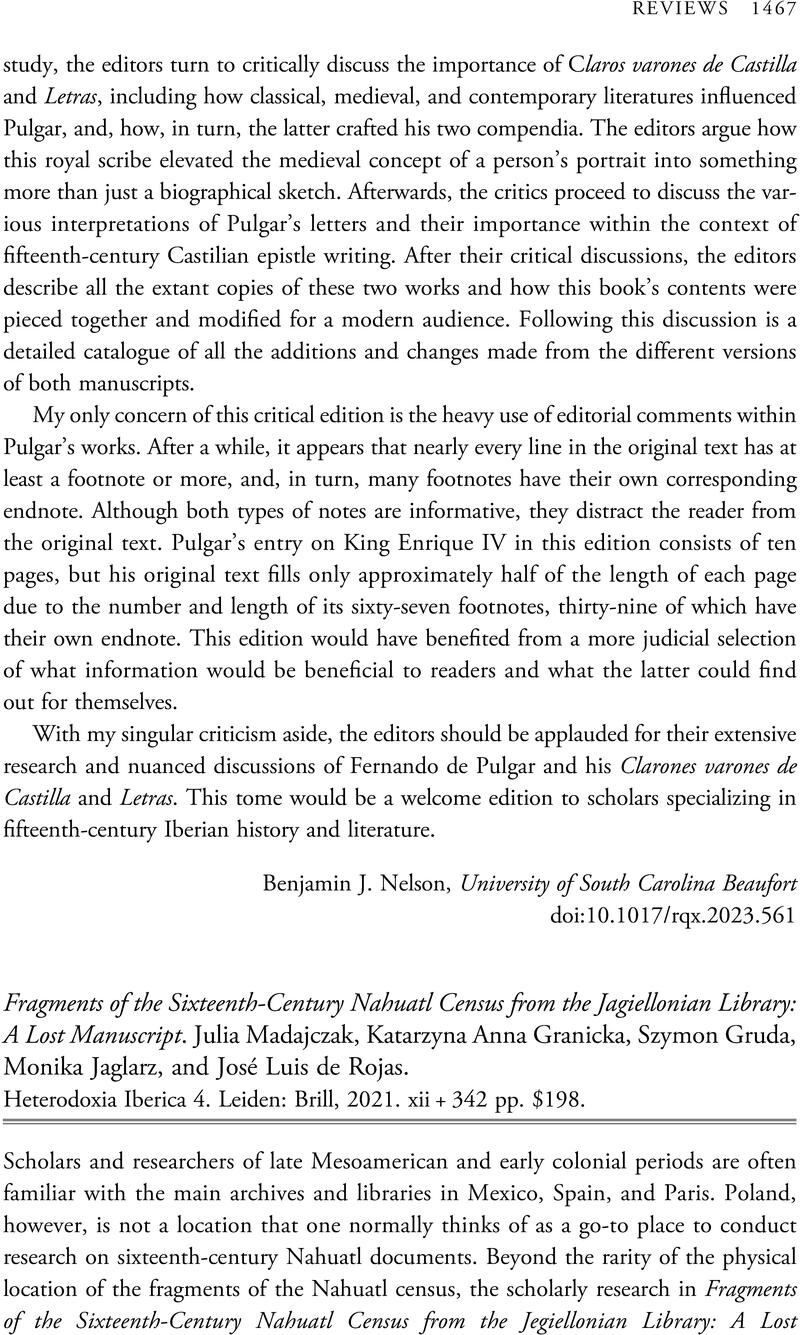No CrossRef data available.
Article contents
Fragments of the Sixteenth-Century Nahuatl Census from the Jagiellonian Library: A Lost Manuscript. Julia Madajczak, Katarzyna Anna Granicka, Szymon Gruda, Monika Jaglarz, and José Luis de Rojas. Heterodoxia Iberica 4. Leiden: Brill, 2021. xii + 342 pp. $198.
Review products
Fragments of the Sixteenth-Century Nahuatl Census from the Jagiellonian Library: A Lost Manuscript. Julia Madajczak, Katarzyna Anna Granicka, Szymon Gruda, Monika Jaglarz, and José Luis de Rojas. Heterodoxia Iberica 4. Leiden: Brill, 2021. xii + 342 pp. $198.
Published online by Cambridge University Press: 24 January 2024
Abstract
An abstract is not available for this content so a preview has been provided. Please use the Get access link above for information on how to access this content.

- Type
- Review
- Information
- Copyright
- Copyright © The Author(s), 2024. Published by Cambridge University Press on behalf of the Renaissance Society of America



